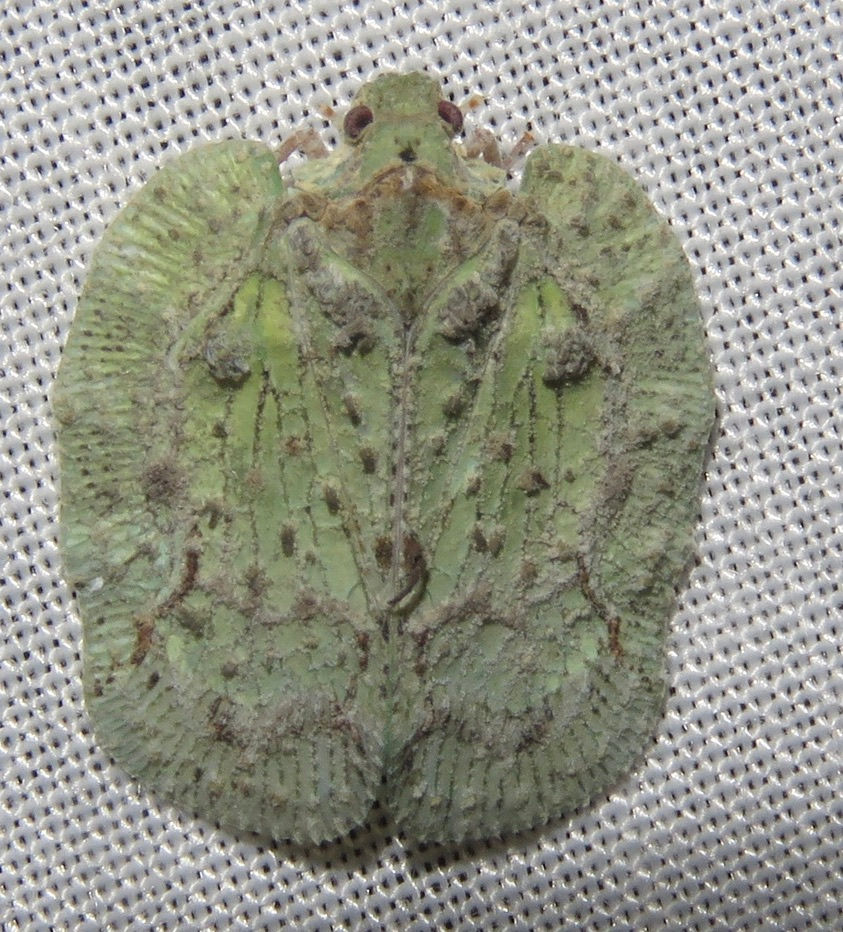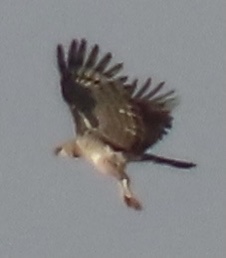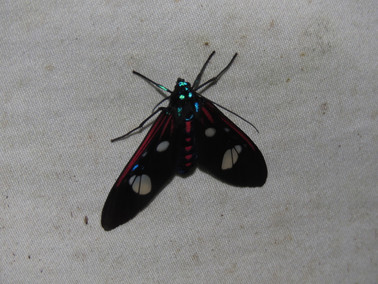Rio Cristalino
- jrycenga
- Aug 15, 2022
- 7 min read
July 15-16-17, 2022 - Brazil/Argentina chapter five

To your right, a Bare-faced Currasow (Crax fasciolata) enroute to our living quarters. -->
Our guide, Rich Hoyer, loves Cristalino Lodge. He points out that even if you went to the same trail within the lodge vicinity every day, it would never be the same twice. It turned out that he was spot-on with that analysis. The variety here was kaleidoscopic, and continually filled with surprise. While Cristalino was not without its issues - the rooms had no air conditioning, and even when we had ordered hours ahead of time, dinners took far too long to be delivered - the place really was idyllic. The chronology, while I will do my best to retain it, is not so vital here. Basically, each day was divided into morning, afternoon, and sometimes evening segments. Getting to the river or to higher ground - including the two observation towers - were the way to observe a variety of species. As with every location, I fell in love with some specific habitats and species; that being said, Cristalino Lodge is better understood in its gestalt.

Our first excursion, on July 15, took us to the Castanheiras Trail. Castanheiras means "Brazil Nut Trees." The Brazil Nut tree itself is a dramatic plant - tall, with a graceful canopy. Remarkable plants increased with every step. Take, for instance, the Xylopia on the left. And obviously I noted the lichen and ants around this, too. We were clearly in a more lush habitat than in the Cerrado. I was reminded of our extensive explorations in Florida - neither the first nor the last time that this would occur to me.
Below - close up of a Brazil Nut trunk; distance view of a Brazil Nut tree; the iNaturalist map of my entries for this day, showing where our Rio Cristalino tributary was located vis-a-vis Alta Floresta.
Despite my eagerness to cross state lines (my nerditude being bottomless), it wasn't possible for us to navigate our way to the border of Pará State.This was the fault of rocks and falls in the river, not our tour leader. But at our closest approach, we did get our life sighting of the breathtaking Caped Heron (Pilherodius pileatus). Along the river we also had such memorable water birds as Sunbittern (Eurpyga helias), Green Ibis ( Mesembrinibis cayennensis), and White-winged Swallow (Tachycineta albiventer).
Being on the river was fun! Margaret took our picture; I couldn't resist snapping scenery shots every day on these maritime excursions. We would find birds along the stream, flying overhead, or perched in trees at the top of the canopy.
It was on this first full Cristalino day that we enjoyed extended time with this South American Tapir (Tapirus terrestris) mother and son. We were quite close, and therefore quite quiet. It was a magical moment, made possible by the silent approach of the boat.


The insect lamp was the gift that kept on giving. My favorite night sighting was this Planthopper in the Flatoidinus genus.
July 16th started with a walk up to the Serra. This was a sometimes difficult hike, up rocks, but wow! Totally worth it and more! Once again, I fell in love with a habitat, especially when the first bird we encountered on the plateau after our climb was another nightjar! The Blackish Nightjar (Nyctipolus nigrescens) may well be my favorite of the many Caprimulgidae we encountered. Small like our Common Poorwill, with a dark cast of feathers providing attractive highlights. To add to its perfection, it doesn't mind roosting in the open on rocks in daylight. Adorable and mysterious. I like that in a bird!


We spent a long time at an overlook, as different species came in and out of the trees in our view. It also meant that we had some glorious views that included our local Rio Cristalino tributary seen from afar. This area also had excellent lichens, and lots of flowering plants.
July 16th was Anne's birthday. I love this candid picture of her taking care of David. The butterflies were also special here - and back at the lodge.
In the afternoon we headed to Ilha do Sol, where the abundance of nightjars continued. We saw numerous roosting Ladder-tailed Nightjars (Hydropsalis climacocerca) and some fly-over Lesser Nighthawks (Chordeiles acutipennis) - one of my very favorite birds of all time! The island also had a charming but criminally-mis-named flycatcher, the Drab Water Tyrant (Ochthornis littoralis). I added more sky shots from the river because I can't help myself!
We celebrated Anne's birthday some more at dinner, before I briefly visited the bug light with Rich.
July 17 was the day for the first of the two Cristalino towers. This one was named after the great Ted Parker, an ornithologist/birder of great renown who tragically died young, but not before he forever reshaped the relationship of North American birders to a growing comprehension of the riches of the Neo-Tropics. It meant a lot to me that he had influenced the woman, Vitoria, who started Cristalino lodge. At dawn we climbed the 240 steps to the top, and started to take in the remarkable landscape and bioscape beneath and around us.
All mystics agree that it takes a steady ascent to reach the metaphysical heights. Once we'd caught our breath, we saw that our new environment changed how we as birders normally sort sight, motion, and sound. Here, motion takes precedence, followed by sound, and lastly by a stolen moment of sight (usually distant). Viewing from a tower in a habitat this rich is all about the dynamism of an ecosystem when it is most alive: at dawn, coming back to full activity. Our time was limited by our human weakness - namely, the coming heat and humidity. But it was worth every minute we could squeeze out of being up there.
Thus, it was there that the Best Thing happened for our friend Frank. He has traveled extensively in South America before, so was garnering fewer life birds than most of us. But he had a desiderata - the Crested Eagle (Morphnus guianensis)! Given its rarity, and huge territory, his stated desire for it verged on the comical...and yet anything seemed possible on this trip. Thus it was that, on a distant tree, at the edge of our sight lines, a candidate was found, examined, photographed, and recorded! YES! Crested Eagle! The picture of this highly desired bird is not mine (it is either Rich's or Frank's). The other two birds here are White-necked Puffbird (Notharchus hyperrhynchus) and Scarlet Macaw (Ara macao). Yes, this was the sort of place where Scarlet Macaws fly right below you!
The Nuts were inside a Nut. And they were delicious. It is almost surprising that Frank and Jan shared them!

We next headed to a trail that took us towards a pond. Out on the water, our boatman gave us a special treat - fresh Brazil Nuts! Scrumptious to such a degree that I have had to re-evaluate my opinion of Brazil Nuts upwards. Other than the 150 Wood Storks we spooked from the sight, the birds at the pond were few. But the butterflies included the dramatic Orsilochus Daggerwing (Marpesia orsilochusi) - the name refers to a shadowy mythological character from the time of the Trojan War, who may (or may not) have been a fast runner, a skilled warrior, or a warrior easily defeated and killed by numerous other figures of that initial world war.
In the late afternoon we headed to a feeder/blind. Because it was late in the day, light conditions (and our desire to avoid flash photography) means that most of my pictures are too awful to share. But the insanely patterned Bare-faced Antbird (Rhegmatorhina gymnops) begs to be photographed in any conditions.

At the dinner hour we attended a presentation by Vitoria Da Riva Carvalho, who leads the efforts at Cristalino. It was inspiring to see how effectively she was preserving habitat. We didn't get out to the bug light and environs until very late. Rich and I spent some time looking at fish - a night naturalizing modality I had never tried. Loved it!
Top Row Tropical House Gecko (Hemidacylus maboula); a big fish, likely a mullet of some sort
Second Row A butterfly from the genus Leucris; a butterfly from the genus Euclera
Third Row A species of Whiptail Catfish (Loricariinae); the coolest mantis I've ever seen, in the genus Liturgusa (get it? and it's true!)
Bottom Row A neotropical grass frog (genus Leptodactylus); a happy me (earlier in the day)
Date | iNaturalist | Life Birds | Year Birds | S. America | Brazil Birds |
7/15/2022 | 46/181 (1916) | 532 | 503 | 250 | |
7/16/2022 | 27/208 (1943) | 565 | 533 | 283 | |
7/17/2022 | 35/243 (1978) | 607 | 572 | 325 |
I've not been commenting much on these statistical summaries, but here I want to underline "The Firehose of Knowledge" effect of this trip. On our previous trips that yielded over 100 new life birds, here is the ratio of life birds per day:
Brazil 2022 243 life birds in 7 days ≈ 34.75 life birds per day (Wings)
Ecuador 2010 206 life birds in 6 days ≈ 33.33 life birds per day (semi-private tour)
Costa Rica 2008 192 life birds in 9 days ≈ 21.33 life birds per day (private tour)
South Africa 2019 266 life birds in 15 days ≈ 18.00 life birds per day (Alvaro's Adventures)
Australia 2007 102 life birds in 9 days ≈ 11.33 life birds per day (done w/o a guide)
Mexico 2015 107 life birds in 13 days ≈ 08.25 life birds per day (QBNA)

The reason that the ratio of life birds/day is an important statistic is that the first encounter with a new bird provides a cornucopia of stimuli - visual, audio, behavioral, habitat, and more. It is not unlike meeting new people. There's a lot to take in, and a lot to learn, and some of it takes time to savor, to contemplate, and to consider. Now remember, I am also trying to do this with lichens - and to be at least casually looking at the butterflies, other insects, lizards, plants, and life in general. The fact that each day I was becoming more mentally exhausted, and less able to generate daily activities like Facebook posts should not be surprising. But wow, was it ever exhilarating. The numbers would eventually calm down, for a variety of reasons. But the effect of these first few days lingered. I often felt as if I was in a suspended state, an intellectual retention basin for a reservoir of unfiltered and not-yet-contemplated experience whose examination needed to be postponed until there was some free time. And sleep.



























































































Comentários